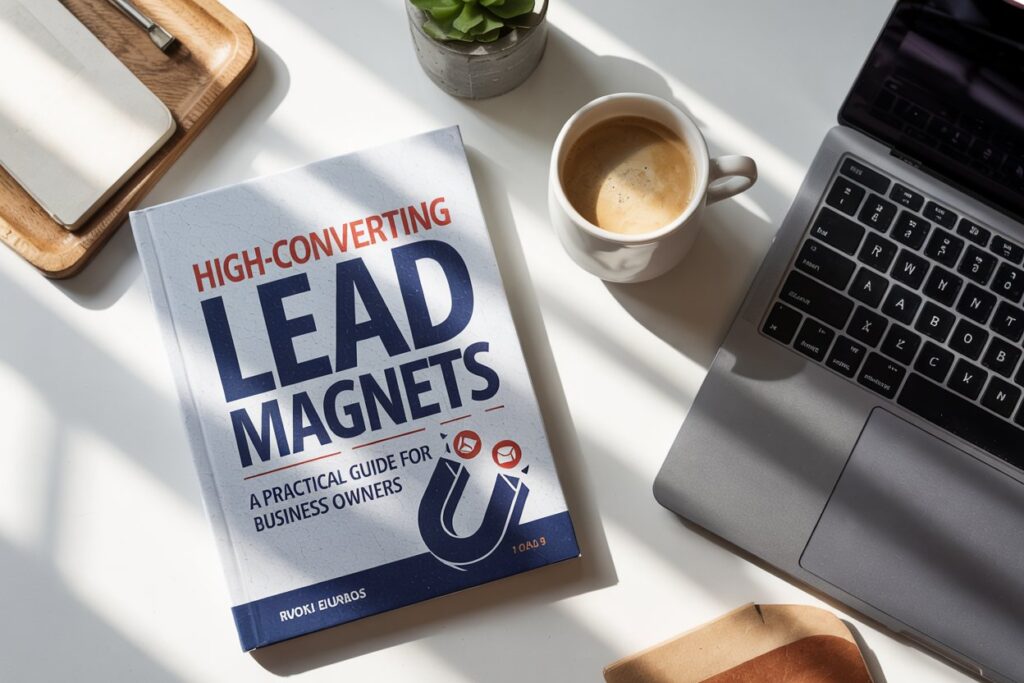Your cart is currently empty!

5 AI Prompt Frameworks to Power Up Your Marketing
Ever notice how some AI conversations flow effortlessly while others feel like pulling teeth?
The difference often comes down to how you structure your requests.
A poorly structured prompt wastes your time, often leading to vague outputs requiring extensive rewrites.
But get the structure right in the beginning, and you’ll unlock AI’s full potential as a marketing partner.
“Projects don’t fail at the end; they fail at the beginning.” ~ James’ism
In our post “ChatGPT for Beginners: 17 Game-Changing Tips,” we introduced the CRAFT prompt framework (Context, Role, Action, Format, Target Audience) to structure AI prompts.
While CRAFT provides a solid foundation for many AI interactions, marketing professionals will benefit from specialized frameworks that are designed for specific tasks. That’s why I’m adding five more powerful frameworks to your prompt toolkit. I use each of them to transform good conversations into great ones.
First, some context.
Think of CRAFT as your everyday workhorse. It’s a reliable and versatile prompt framework suitable for many situations. Start with it.
These additional frameworks are specialty tools. Each one is suited to specific marketing challenges. Together, they form an AI marketing toolkit that can be used for most marketing tasks.
“You don’t have to be a genius or a visionary or even a college graduate to be successful. You just need a framework and a dream.” ~ Michael Dell
AI Prompt Frameworks that Solve Real Problems
Before we get into the details, I’d like to share a couple of real-world examples of framework implementation success. Don’t worry about the acronyms for now. They will become clear later in this post.
“How well we communicate is not determined by how well we say things but how well we are understood” ~ Andrew Grove
PAR Framework Impact

An interactive Investor used a structured approach for their paid search campaigns that delivered impressive results:
- Created nearly 10,000 different text ads
- Achieved 286% increase in keywords
- Secured 89% share of voice across top 10 branded terms
- Significantly reduced cost per acquisition
CUP Framework Results
Crabtree & Evelyn implemented structured frameworks for their marketing efforts and achieved the following:

- 30% increase in return on ad spend
- Improved customer-led product development
- Enhanced creative content and branding
- While maintaining flat media spend
These real-world examples demonstrate how companies use structured frameworks to achieve measurable marketing results.
A Quick AI Prompt Framework Selection Guide
Before we dive deep into each framework, here’s a quick guide to help you choose the right one for your needs:
| Framework | Best For | When to Use | Example Task |
| CRAFT (Context, Role, Action, Format, Target Audience) | General queries | General investigation, brainstorming, research | Investigating options or business opportunities |
| GCT (Goal, Context, Task) | Educational content | Teaching concepts | Writing how-to guides |
| PAR (Problem, Action, Result) | Problem solving | Tackling challenges | Improving customer retention |
| CUP (Clarity, Use Case, Precision) | Marketing content | Creating promotions | Writing ad copy |
| ACT (Audience, Context, Tone) | Brand communication | Building connections | Crafting email campaigns |
| RACI (Role, Action, Constraints, Impact) | Strategic planning | Project management | Developing marketing plans |
Five AI Prompt Frameworks for Marketing
We love frameworks. They give us a leg up, especially when working with new things. Another example is the copywriting framework described in this post: Boost Your Impact with 5 Proven Copywriting Frameworks.
1. GCT (Goal, Context, Task)
After setting the role, the GCT framework guides you through three essential elements:
- Set a clear goal – what you want to achieve
- Give helpful background – information AI needs to understand the situation
- Explain exactly what you need – specific actions or deliverables
This framework shines when you need educational or explanatory content. It’s perfect for:
- Writing blog posts and articles
- Creating how-to guides
- Developing training materials
- Crafting product descriptions
- Writing email newsletters
The GCT AI prompt framework helps structure your content for maximum clarity whenever you need to explain complex ideas to a specific audience.
GCT Use Case
A business coach wants to create a lead magnet that attracts qualified prospects by offering a valuable resource on high-converting lead generation strategies.
This in-depth how-to guide will educate business owners on effective lead magnets and entice them to engage further with the coach’s services.
Sample GCT Prompt

You’re a direct response marketing expert specializing in lead generation for service-based businesses. Your goal is to write a 1,500-word how-to guide that teaches business owners how to create high-converting lead magnets. The audience consists of six- and seven-figure business owners who understand the importance of lead generation but struggle to execute it effectively. The guide should include:
- A clear definition of a lead magnet
- Five types of lead magnets that convert well
- Step-by-step instructions for creating one
- Examples of successful lead magnets
- A call to action encourages readers to take the next step in working with a coach.
By structuring the request using GCT, the AI delivers a comprehensive, structured guide that aligns with both the audience’s needs and the business goal.
While GCT works well for educational content, what if you need to solve a pressing business challenge? That’s where the PAR framework comes in.
2. PAR (Problem, Action, Result)
PAR helps you tackle specific business challenges:
- Define the problem clearly
- Specify needed actions
- Describe desired results
Choose the PAR AI prompt framework when you need solutions to specific challenges. It’s especially effective for:
- Troubleshooting customer service issues
- Improving business processes
- Creating case studies
- Developing solution-focused content
- Writing problem-solving guides
- Crafting sales proposals
This framework excels when you need practical solutions with clear metrics for success.
PAR Use Case
An e-commerce store selling high-end organic products is experiencing declining customer retention and wants strategies to increase repeat purchases.
A problem-solving strategy that outlines actions the business can take to improve retention.
Sample PAR Prompt
Our e-commerce store specializes in organic, high-end consumer products. However, repeat purchases have declined over the last six months, and we need a strategy to boost customer retention.
- Problem: Customers purchase once but do not return.
- Action: Provide a three-step approach to increase repeat purchases, including loyalty programs, personalized follow-ups, and email automation.
- Result: The strategy should aim to increase customer retention by at least 20% within the next three months.
With the PAR framework, the AI focuses on identifying the issue, outlining actionable steps, and defining success metrics—making the solution easy to implement.
While problem-solving is crucial, marketing success often depends on crafting precise, persuasive messaging. The CUP framework ensures your prompts yield sharp, actionable copy.
3. CUP (Clarity, Use Case, Precision)

CUP makes sure every detail matters:
- Make the request crystal clear
- Explain exactly how it will be used
- Include important specifics
CUP is your go-to framework for promotional content and targeted messaging. It works best for:
- Creating social media ads
- Writing landing page copy
- Developing email campaigns
- Crafting promotional offers
- Writing sales scripts
- Creating marketing campaign messages
When you need content that drives specific actions from a clearly defined audience, CUP delivers results.
CUP Use Case
A financial consultant is hosting a free webinar on tax-saving strategies for entrepreneurs and needs a compelling Facebook ad.
A clear, concise ad that drives sign-ups from high-income entrepreneurs.
Sample CUP Prompt

Write a persuasive Facebook ad promoting a free webinar on ‘Tax-Saving Strategies for Six-Figure Entrepreneurs.’
- Clarity: The ad should clearly communicate the webinar’s value in saving business owners thousands on taxes.
- Use Case: This ad will run on Facebook, targeting business owners earning $100K+. It should be engaging, concise, and drive registrations.
- Precision: Use strong, compelling language with a clear CTA, and keep it under 125 words.
With CUP, the AI delivers focused, high-impact messaging designed to convert, ensuring the ad aligns perfectly with the intended audience and platform.
Messaging is one thing, but making sure it resonates with the right audience in the right tone is another. That’s where the ACT framework shines.
4. ACT (Audience, Context, Tone)
ACT puts your audience first:
- Define who you’re talking to
- Set the background
- Pick your tone
Use ACT when tone and audience connection are crucial. This framework is ideal for:
- Writing personalized sales emails
- Creating customer success stories
- Developing brand messaging
- Writing website copy
- Crafting social media content
- Creating video scripts
- Writing podcast show notes
The ACT framework helps you maintain consistent voice and messaging across different channels while staying focused on your audience’s needs.
ACT Use Case
A B2B SaaS company is launching a new feature and wants to email existing customers in a personal and engaging way.
An email that effectively communicates the new feature while strengthening customer relationships.
Sample ACT Prompt
Write a personalized email announcing a new feature for our project management SaaS.
- Audience: Our existing customers, primarily operations managers at mid-sized companies, who rely on our software daily.
- Context: We’re introducing an automation feature that will save them 10+ hours a week.
- Tone: Friendly, appreciative, and excited—but not overly salesy. The email should make them feel valued and show how this feature makes their work easier.
The ACT framework ensures the message is tailored, relevant, and delivered in a voice that connects with the audience.
While ACT helps craft audience-focused messaging, sometimes a framework is needed to structure complex marketing plans. That’s where RACI comes into play.
5. RACI (Role, Action, Constraints, Impact)
RACI helps you plan with purpose:
- Tell AI who needs what
- List the steps
- Set your limits
- Define success
RACI is your best choice for strategic planning and project-based content. It’s particularly effective for:
- Creating marketing strategies
- Developing project plans
- Writing business proposals
- Building campaign roadmaps
- Creating content calendars
- Developing launch plans
- Writing implementation guides
RACI delivers clear, practical guidance when you need structured, actionable plans that respect real-world constraints.
RACI Use Case
A growing online coaching business wants to streamline its content marketing, but publishing consistently is challenging.
A structured content calendar outlining responsibilities, deadlines, and expected impact.
Sample RACI Prompt

We need a structured content calendar for our online coaching business.
- Role: Assign responsibilities for content creation, editing, and publishing among our team (one writer, one editor, one social media manager).
- Action: Define key steps, including ideation, drafting, approval, and distribution.
- Constraints: We have a small team, so the process must be efficient. We need at least four blog posts and eight monthly social media posts.
- Impact: The calendar should help us stay consistent and increase our website traffic by 30% over six months.
Using RACI, the AI helps organize a clear, actionable plan, ensuring every team member knows their role and the business stays on track with its content goals.
The Power of Systems Thinking
Each framework equips you with a specific way to structure your AI prompts for maximum success. Whether you’re writing educational content, solving business problems, crafting sharp marketing copy, personalizing messaging, or planning strategically, there’s a framework tailored to your needs.
“Systems thinking is a discipline for seeing wholes. It is a framework for seeing interrelationships rather than things, for seeing ‘patterns of change’ rather than ‘static snapshots’” ~ Peter Senge (MIT Sloan)
Let’s look at a before and after to highlight the benefits of using prompt frameworks.
Basic Prompt
“Write a blog post about social media marketing.”
Framework-Enhanced Prompt (using GCT)
“You’re a content strategist specializing in social media marketing for small businesses. Your goal is to write a practical guide that helps business owners choose the right social platforms for their needs. Our readers are successful entrepreneurs who understand marketing basics but struggle with social media strategy. Create a 1000-word post that explains platform selection criteria, includes real-world examples, and provides a decision-making framework. Add tips for managing the chosen platforms efficiently.”
Try it yourself. You will see the difference?
The enhanced prompt provides clear direction, context, and specific deliverables. Using the framework, the resulting output is improved a lot.
Watch Out for These Prompt Mistakes
The following are some of the mistakes I’ve made.
Being Too General
Generic prompts are the fast track to mediocre results. Writing “create marketing content” is like asking a chef to “make food” – you might get something edible, but it probably won’t be what you wanted.
How to spot it: Ask yourself, “Can this prompt be used for any business or industry?”
If it could, you need to be more specific.
Also, watch out for vague terms like “good,” “better,” or “improve” without clear metrics or definitions.
Quick fix: Add specifics about your industry, audience, goals, and desired outcomes. Instead of “write social media posts,” try “create five LinkedIn posts targeting HR managers at mid-sized manufacturing companies, focusing on employee retention strategies.”
Adding Too Much Information

While context is crucial, overwhelming AI with unnecessary details is like giving someone directions that include what you had for breakfast – it just creates confusion.
An AI is similar to a highly intelligent intern who wants to please. Give it too much information, and it will try to give you something, but you’re not going to be happy.
How to spot it: Look for information that doesn’t directly impact the desired outcome. For example, you might overload the AI if you’re explaining company history in a prompt about writing a product description.
Quick fix: Structure your prompt using the relevant framework. Stick to details that directly influence the output you want.
Forgetting Your Audience
Creating content without a clear audience in mind is like hosting a party without knowing who’s coming – you can’t make good decisions about what to include.
How to spot it: If your prompt doesn’t mention who will read, use, or benefit from the output, you’ve forgotten your audience. Watch out for generic terms like “users” or “customers.” Be specific.
Quick fix: Define your audience’s role, experience level, pain points, and what they need to learn or do with the information.
Skipping Boundaries
Without constraints, AI might suggest building a rocket when you need a bicycle. Clear boundaries help focus the output on practical, achievable solutions.
“A well crafted creative brief is a stepping stone to insight.” ~ Herb Skelton (A PITA Creative Director I worked with in my youth.)
How to spot it: Check if your prompt includes specific limitations like budget, timeline, technical constraints, or brand guidelines. Without these, you will likely get unrealistic or unusable suggestions.
Quick fix: Always include relevant constraints like word count, technical requirements, budget limits, or time frames. For marketing content, specify buyer’s personas and journeys, brand voice, and style guidelines.
Prompt Frameworks Getting Started Guide
If you’re new to using frameworks, here’s how to begin:
- Start with GCT for your next piece of content – it’s the most straightforward framework and builds naturally on the basic prompting skills we covered in our beginner’s guide
- Practice one framework at a time until it feels natural
- Keep a swipe file of successful prompts (remember our Notion database tip from the beginner’s guide?)
- Gradually mix and match frameworks as you get comfortable
Ready to Level Up?
“The future of artificial intelligence is not about man versus machine, but rather man with machine. Together, we can achieve unimaginable heights of innovation and progress.” ~ Fei-Fei Li (Stanford University)
The five AI prompt frameworks we covered – GCT, PAR, CUP, ACT, and RACI – are your power tools for marketing success.
But frameworks aren’t just about getting tasks done faster. When used effectively, these structures help you:
- Test different angles on your marketing challenges
- Spot gaps in your strategy you might have missed
- Generate fresh ideas when you’re stuck
- Challenge your assumptions about what might work
- Scale your content creation without sacrificing quality
Start small – pick one framework that matches your next project. As you get comfortable with the back-and-forth conversation style, combine frameworks or add your twists. You’ll discover that the prompt frameworks described in this article are starting points that don’t just help you create better content; they help you become a sharper, more strategic marketer.
Remember, AI isn’t here to replace your marketing expertise. It’s here to amplify it. Combining the foundational skills from our beginner’s guide with proven prompt frameworks discussed in this article will make AI a valuable marketing partner.
Related Posts
-
Marketing for People Who Don’t Like Marketing
The businesses winning today are the ones who are using strategic personalization to turn resistance into revenue.
-
Everything Connects
In difficult economic times marketing fundamentals like the 7 Ps are more important than ever.
-
Smart AI Stack for Marketers
Drawing on Aesop’s fable, we describe how bundling AI tools delivers higher quality.
Author: James Hipkin
Since 2010, James Hipkin has built his clients’ businesses with digital marketing. Today, James is passionate about websites and helping the rest of us understand online marketing. His customers value his jargon-free, common-sense approach. “James explains the ins and outs of digital marketing in ways that make sense.”
Use this link to book a meeting time with James.

